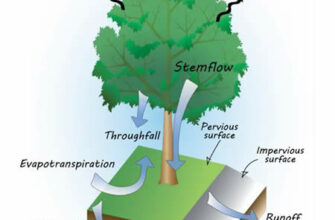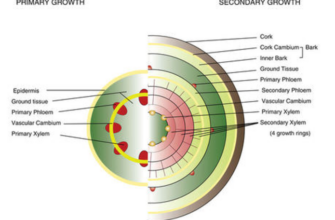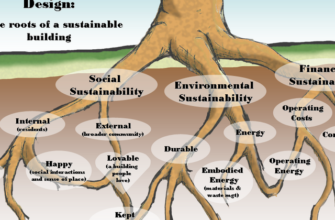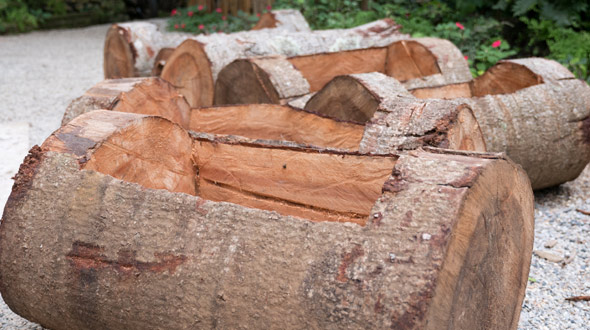
- 6 Ways to Upcycle Dead Trees
- Unique Ideas for Recycling Dead Trees
- Transforming Dead Trees into Functional Art Pieces
- Using Dead Trees to Create Natural Garden Features
- Repurposing Dead Trees as Furniture and Decorative Items
- Dead Trees as Building Materials for Sustainable Construction
- Dead Trees in Landscaping: Creating Sculptural Elements
- Repurposing Dead Trees for Firewood and Biomass Energy
- Innovative Ways to Reuse Dead Trees
- Dead Trees as Planters for Unique Garden Displays
- Utilizing Dead Trees for Wildlife Habitat Creation
- Dead Trees as Natural Fencing and Privacy Screens
- Repurposing Dead Trees as Mulch and Compost
- Dead Trees as Artistic Sculptures and Installations
- Using Dead Trees for Erosion Control and Land Restoration
- FAQ:
- How can I repurpose a dead tree in my backyard?
- What are some unique ideas for repurposing dead trees?
- Is it possible to repurpose dead trees for indoor decor?
6 Ways to Upcycle Dead Trees
When a tree dies, it may seem like the end of its usefulness. However, there are many creative ways to repurpose dead trees and give them a new life. From furniture to art installations, these dead trees can be transformed into something beautiful and functional.
One way to repurpose dead trees is by turning them into unique pieces of furniture. The natural shapes and textures of the wood can be preserved and used to create one-of-a-kind tables, chairs, or shelves. These pieces not only add a rustic charm to any space but also serve as a reminder of the tree’s former life.
Another creative way to repurpose dead trees is by using them as a canvas for art. The trunk and branches can be carved or painted to create stunning sculptures or murals. By transforming the dead tree into a work of art, it becomes a focal point and a conversation starter.
Dead trees can also be repurposed into outdoor structures such as pergolas or gazebos. The sturdy trunks and branches can be used as support beams, while the canopy provides shade and shelter. These structures not only add functionality to a garden or backyard but also create a unique and natural aesthetic.
For those with a green thumb, dead trees can be repurposed into planters. Hollowed-out trunks or stumps can be filled with soil and used as containers for flowers or small trees. This not only adds a touch of nature to any space but also helps to recycle and reduce waste.
In addition to furniture and art, dead trees can also be repurposed into firewood. The wood can be cut into logs and used as fuel for fireplaces or outdoor fire pits. This not only provides a sustainable source of heat but also reduces the need for traditional fossil fuels.
Lastly, dead trees can be repurposed into natural barriers or erosion control measures. By strategically placing the trunks and branches, they can help prevent soil erosion and protect vulnerable areas. This not only adds a functional element to the landscape but also promotes environmental sustainability.
In conclusion, there are numerous creative ways to repurpose dead trees. Whether it’s through furniture, art, outdoor structures, planters, firewood, or erosion control measures, these dead trees can be given a new purpose and continue to bring beauty and functionality to our lives.
Unique Ideas for Recycling Dead Trees
When a tree dies, it can be a sad sight, but it doesn’t have to go to waste. There are many creative ways to upcycle dead trees and give them a new purpose. Here are some unique ideas for recycling dead trees:
- Woodworking Projects: Dead trees can be transformed into beautiful furniture pieces or decorative items. From tables and chairs to shelves and picture frames, the possibilities are endless.
- Garden Art: Dead trees can be turned into stunning garden sculptures or art installations. Carve intricate designs or shapes into the trunk, or use the branches to create unique structures like arbors or trellises.
- Firewood: If the tree is small enough, it can be chopped into firewood and used for heating or cooking. Dead trees make excellent firewood as they are already dry and seasoned.
- Mulch: Dead trees can be chipped into mulch, which can be used to improve soil quality and retain moisture in gardens and flower beds. This is a great way to give back to nature and nourish other living plants.
- Wildlife Habitat: Dead trees can provide valuable habitat for wildlife. Leave the tree standing or create a snag by removing the branches, and watch as birds, squirrels, and other animals make it their home.
- Artistic Installations: Dead trees can be used as the base for unique artistic installations. Combine them with other materials like metal or glass to create visually striking sculptures or installations.
Don’t let a dead tree go to waste. Get creative and find a unique way to repurpose it. Whether it’s through woodworking, garden art, firewood, mulch, wildlife habitat, or artistic installations, there are endless possibilities to give dead trees a new life.
Transforming Dead Trees into Functional Art Pieces
When a tree dies, it can be a sad sight, especially if it has been a part of your landscape for many years. However, instead of letting the dead tree go to waste, there are several creative ways to upcycle it into functional art pieces that can add beauty and functionality to your home or garden.
One way to repurpose a dead tree is by turning it into a unique and eye-catching table. By cutting the tree trunk into slices and sanding them down, you can create a rustic and natural tabletop. The tree rings add character and charm to the piece, making it a conversation starter in any room.
Another way to transform a dead tree is by creating a functional bookshelf. By cutting the trunk into different-sized sections and attaching them to a wall, you can create a one-of-a-kind bookshelf that showcases your love for nature. The irregular shapes and texture of the wood make each shelf unique, adding an artistic touch to your home.
If you’re looking for a more practical use for a dead tree, consider turning it into firewood. By cutting the trunk into smaller, manageable pieces, you can create a sustainable source of fuel for your fireplace or wood-burning stove. This not only saves you money on heating costs but also reduces waste by repurposing the dead tree.
For those with a green thumb, a dead tree can be transformed into a stunning plant stand. By hollowing out the trunk and adding shelves or platforms, you can create a unique display for your potted plants. The natural texture of the wood adds an organic and earthy feel to your garden, making it a focal point for your outdoor space.
If you have a knack for woodworking, consider turning a dead tree into a functional piece of art, such as a bench or a sculpture. By carving the wood into intricate designs or shapes, you can create a statement piece that adds beauty and functionality to your home or garden. The natural grain and texture of the wood will enhance the artistic value of the piece, making it a true work of art.
Lastly, a dead tree can be transformed into a unique and eco-friendly fence. By cutting the trunk into posts and attaching them to a frame, you can create a rustic and charming fence that adds privacy and security to your property. The natural beauty of the wood will blend seamlessly with your outdoor surroundings, creating a natural barrier that is both functional and aesthetically pleasing.
In conclusion, there are many ways to repurpose a dead tree and transform it into functional art pieces. Whether it’s turning it into a table, bookshelf, firewood, plant stand, woodworking project, or fence, the possibilities are endless. By upcycling dead trees, you not only give them a second life but also add beauty and functionality to your home or garden.
Using Dead Trees to Create Natural Garden Features
When trees die, they don’t have to be removed or discarded. Instead, they can be upcycled and repurposed to create unique and natural garden features. Dead trees can add a touch of rustic charm to any outdoor space while also serving a practical purpose.
One creative way to repurpose dead trees in the garden is by turning them into planters. Hollow out the trunk and fill it with soil to create a unique and eye-catching planter. This can be done with small trees or even large tree stumps, depending on the size of the desired planter.
Another idea is to use dead trees as natural borders or edging in the garden. By cutting the trunks into sections and placing them along paths or flower beds, you can create a natural and organic look. The different heights and textures of the tree trunks can add visual interest and create a sense of depth in the garden.
If you’re looking to create a seating area in your garden, consider using dead trees as benches. By cutting the trunk into sections and adding a flat surface on top, you can create unique and rustic seating options. These tree stump benches can be placed around a fire pit or scattered throughout the garden to provide a place to sit and enjoy the surroundings.
Dead trees can also be used to create natural sculptures or art installations in the garden. By carving or shaping the trunk, you can create unique and eye-catching focal points. These sculptures can be placed strategically throughout the garden to add visual interest and create a sense of whimsy.
In addition to these ideas, dead trees can also be used to create birdhouses, bird feeders, or even fairy houses. By hollowing out the trunk or branches, you can provide shelter and food for birds or create a magical home for fairies. These additions can attract wildlife to your garden and add a touch of enchantment to the space.
Overall, repurposing dead trees in the garden is a creative and sustainable way to add natural elements to your outdoor space. Whether you choose to use them as planters, borders, benches, sculptures, or birdhouses, dead trees can bring a unique and organic touch to your garden while also reducing waste.
Repurposing Dead Trees as Furniture and Decorative Items
When it comes to finding creative ways to upcycle dead trees, furniture and decorative items are a great option. Instead of letting these trees go to waste, they can be transformed into unique pieces that add a natural and rustic touch to any space.
One way to repurpose dead trees is by turning them into tables. By carefully cutting and sanding the trunk, it can be transformed into a beautiful and sturdy tabletop. The natural patterns and textures of the wood can create a one-of-a-kind piece that becomes a focal point in any room.
Another idea is to use dead trees as shelves or bookcases. By cutting the trunk into different lengths and attaching them to a wall, you can create a stunning shelving unit. The irregular shapes and sizes of the tree trunks add a touch of uniqueness to the design, making it a conversation starter.
For those looking for smaller decorative items, dead trees can be transformed into candle holders or vases. By hollowing out a section of the trunk and adding a glass insert, you can create a stunning centerpiece for any table or mantel. The natural beauty of the wood combined with the soft glow of the candles or the vibrant colors of the flowers can create a truly enchanting display.
If you’re feeling particularly adventurous, you can even repurpose dead trees into sculptures or art installations. By carving and shaping the trunk, you can create intricate designs that showcase the natural beauty of the wood. These sculptures can be placed indoors or outdoors, adding a unique and artistic touch to any environment.
In conclusion, repurposing dead trees as furniture and decorative items offers a variety of creative ways to give new life to these natural resources. Whether it’s through tables, shelves, candle holders, or sculptures, the possibilities are endless. By incorporating these unique pieces into your home or space, you not only add a touch of nature but also contribute to sustainable and eco-friendly practices.
Dead Trees as Building Materials for Sustainable Construction
Dead trees can be a valuable resource for sustainable construction. Instead of letting them go to waste, there are several ways to upcycle these trees into building materials that can be used in eco-friendly construction projects.
One way to repurpose dead trees is by using them as structural elements in buildings. By carefully selecting and processing the wood, it can be transformed into beams, columns, and trusses that provide strength and stability to the structure. This not only reduces the need for new materials but also gives a unique and natural aesthetic to the building.
In addition to structural elements, dead trees can also be used as cladding or siding for buildings. The wood can be milled into planks or shingles, which can then be used to cover the exterior of the building. This not only adds a natural and rustic look to the building but also provides insulation and protection from the elements.
Another way to repurpose dead trees is by turning them into furniture. The wood can be used to create tables, chairs, and other pieces of furniture that add a touch of nature to any space. By using dead trees for furniture, it helps to reduce the demand for new wood and promotes sustainable practices.
Dead trees can also be transformed into decorative elements for interior design. The wood can be carved, shaped, or even used as a canvas for paintings or engravings. This allows for unique and artistic pieces that bring nature indoors and create a connection with the natural world.
Furthermore, dead trees can be used as mulch or compost for landscaping projects. By chipping or shredding the wood, it can be used to enrich the soil, suppress weeds, and retain moisture in gardens and flower beds. This not only helps to recycle the trees but also promotes healthy and sustainable gardening practices.
In conclusion, dead trees have many potential uses in sustainable construction. Whether it’s as structural elements, cladding, furniture, decorative elements, or mulch, repurposing dead trees can help reduce waste, promote sustainability, and create unique and natural spaces.
Dead Trees in Landscaping: Creating Sculptural Elements
When it comes to landscaping, dead trees can be transformed into unique and eye-catching sculptural elements. Instead of removing them completely, upcycling dead trees can add a touch of natural beauty to your outdoor space.
One way to repurpose dead trees is by turning them into artistic tree stumps. By carving intricate designs or patterns into the wood, you can create a one-of-a-kind sculpture that becomes a focal point in your garden. These sculptural elements can be placed strategically throughout your landscape to add visual interest and create a sense of whimsy.
Another creative way to use dead trees in landscaping is by creating log benches. By cutting the tree trunk into sections and smoothing the edges, you can create unique seating areas that blend seamlessly with the natural surroundings. These log benches can be placed in shady spots or near a garden path, providing a cozy and rustic seating option for enjoying your outdoor space.
Dead trees can also be transformed into stunning birdhouses or bird feeders. By hollowing out the trunk and adding a roof or perch, you can create a safe and inviting space for birds to nest or feed. These birdhouses can be hung from branches or placed on a sturdy post, attracting a variety of bird species to your garden.
If you’re looking for a larger sculptural element, consider creating a dead tree sculpture. By using various branches and trunks, you can create a unique and abstract piece of art that adds a touch of drama to your landscape. These sculptures can be placed in open spaces or near a water feature, creating a focal point that sparks conversation and admiration.
For a more functional approach, dead trees can also be repurposed into natural fences or privacy screens. By stacking the tree trunks horizontally or vertically, you can create a barrier that adds both beauty and privacy to your outdoor space. These natural fences can be enhanced with climbing plants or vines, further enhancing the visual appeal.
In conclusion, dead trees can be repurposed in creative ways to add sculptural elements to your landscaping. Whether it’s through carving artistic designs, creating log benches, building birdhouses, crafting sculptures, or constructing natural fences, upcycling dead trees can bring a unique and natural beauty to your outdoor space.
Repurposing Dead Trees for Firewood and Biomass Energy
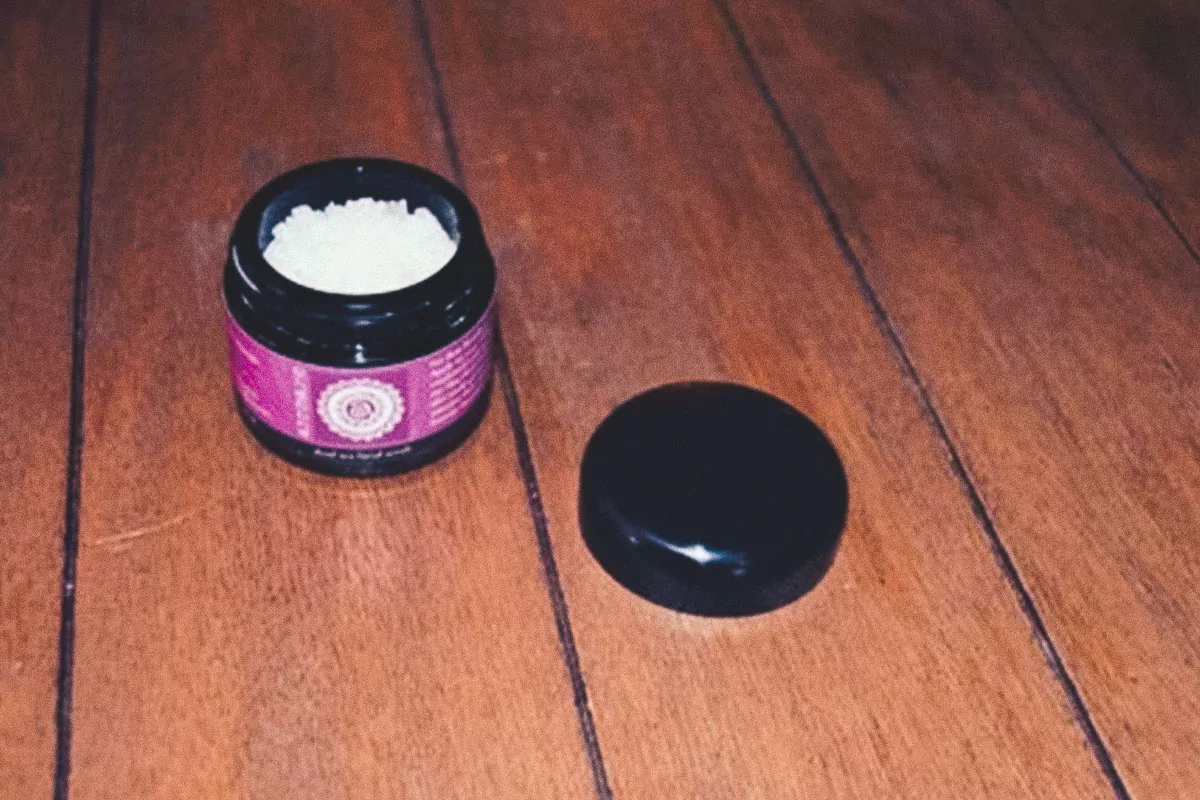
When a tree dies and can no longer serve its original purpose, there are several creative ways to repurpose it. One of the most common and practical ways is to use dead trees as a source of firewood and biomass energy.
Dead trees can be chopped into logs and used as firewood for heating homes and buildings. This not only provides a renewable source of heat but also reduces the need for fossil fuels, helping to mitigate climate change. It is important to properly dry and store the firewood to ensure it burns efficiently and safely.
In addition to firewood, dead trees can also be used as biomass energy. Biomass energy involves converting organic materials, such as dead trees, into fuel sources. This can be done through processes such as combustion, gasification, or anaerobic digestion. The resulting energy can be used for heating, electricity generation, or even transportation.
Repurposing dead trees for firewood and biomass energy helps to make the most of a valuable resource that would otherwise go to waste. It also promotes sustainability and reduces the reliance on non-renewable energy sources. By upcycling dead trees in this way, we can contribute to a greener and more eco-friendly future.
Innovative Ways to Reuse Dead Trees
When trees die, they can still serve a purpose in various creative ways. Here are some innovative ways to reuse dead trees:
1. Furniture: Dead trees can be transformed into unique pieces of furniture, such as coffee tables, benches, or even chairs. The natural patterns and textures of the wood can add a rustic and organic touch to any interior design.
2. Art installations: Dead trees can be used as a canvas for artistic expression. Artists can carve intricate designs or sculptures into the wood, creating visually stunning installations that blend nature and art.
3. Firewood: Dead trees can be chopped into firewood, providing a sustainable and renewable source of heat during colder months. This not only reduces waste but also helps to minimize the demand for non-renewable energy sources.
4. Mulch: Dead trees can be chipped or shredded to create organic mulch. This mulch can be used to nourish and protect other plants in gardens and landscapes, improving soil quality and conserving water.
5. Wildlife habitats: Dead trees provide valuable habitats for various wildlife species. Birds, squirrels, insects, and fungi can all find shelter and food in decaying tree trunks, contributing to the biodiversity of an ecosystem.
6. Natural barriers: Dead trees can be strategically placed to create natural barriers or boundaries in outdoor spaces. They can be used to define pathways, separate different areas, or provide privacy, all while adding a touch of natural beauty.
By repurposing dead trees in these innovative ways, we can not only extend their lifespan but also contribute to a more sustainable and eco-friendly environment.
Dead Trees as Planters for Unique Garden Displays
When it comes to finding creative ways to upcycle dead trees, using them as planters for unique garden displays is a great option. Instead of removing dead trees from your yard or property, why not repurpose them into beautiful and functional planters?
One of the ways to repurpose dead trees as planters is by hollowing out the trunk and creating a natural-looking container for your plants. This can be done by carefully removing the inner wood and creating space for soil and plants. The result is a unique planter that adds a rustic and natural touch to your garden.
Another way to use dead trees as planters is by cutting them into sections and creating different levels for your plants. By cutting the trunk into different lengths, you can create a tiered planter that adds depth and visual interest to your garden. This is especially effective when using trees with interesting bark or texture.
If you have a larger dead tree, you can also repurpose it as a vertical planter. By attaching plant pots or containers to the trunk, you can create a living wall of plants that adds a stunning focal point to your garden. This is a great way to maximize space and create a unique display.
Using dead trees as planters not only repurposes materials that would otherwise go to waste, but it also adds a touch of nature and creativity to your garden. Whether you choose to hollow out the trunk, create tiered planters, or make a vertical planter, the possibilities are endless. So next time you have a dead tree on your property, consider repurposing it into a unique planter for your garden.
Utilizing Dead Trees for Wildlife Habitat Creation
When it comes to finding ways to repurpose dead trees, one option that often gets overlooked is using them to create wildlife habitats. Dead trees, also known as snags, can provide a valuable source of food, shelter, and nesting sites for a variety of wildlife species.
One way to utilize dead trees for wildlife habitat creation is by leaving them standing in natural areas. This allows birds and small mammals to use the tree as a perch, nest site, or food source. It also provides a home for insects, which in turn attract insect-eating birds and other predators.
Another way to repurpose dead trees is by creating artificial snags. This involves cutting the tree at a certain height and leaving the trunk standing. By doing this, you can create a snag that mimics the natural process of decay, providing habitat for wildlife while still ensuring safety for people and property.
Dead trees can also be used to create brush piles, which are a great habitat for small mammals, reptiles, and amphibians. By piling up branches and logs from dead trees, you can create a sheltered area that provides protection from predators and harsh weather conditions.
In addition to creating individual habitats, dead trees can also be used to create wildlife corridors. By strategically placing snags along a linear path, such as a stream or forest edge, you can create a connected habitat for wildlife to move through and find food, shelter, and mates.
Lastly, dead trees can be used to create artificial nesting sites for cavity-nesting birds, such as woodpeckers and owls. By drilling holes into the trunk or adding nest boxes, you can provide additional nesting opportunities for these species, which are often limited by the availability of suitable nest sites.
In conclusion, there are many ways to repurpose dead trees for wildlife habitat creation. Whether it’s leaving them standing, creating artificial snags, building brush piles, creating wildlife corridors, or providing nesting sites, dead trees can play a crucial role in supporting biodiversity and creating a more sustainable ecosystem.
Dead Trees as Natural Fencing and Privacy Screens
When it comes to finding creative ways to upcycle dead trees, using them as natural fencing and privacy screens is a unique and eco-friendly option. Instead of cutting down healthy trees or installing artificial barriers, repurposing dead trees can provide a natural and rustic aesthetic to your outdoor space.
One way to repurpose dead trees as fencing is by using their trunks as posts. By digging holes and securing the trunks vertically in the ground, you can create a sturdy and visually appealing fence. The irregular shapes and textures of the dead tree trunks add a natural charm to the overall look. Additionally, the height of the trunks can provide privacy and act as a sound barrier.
If you prefer a more open and decorative fencing option, you can repurpose dead tree branches. By trimming the branches to a uniform length, you can create a unique fence design. These branches can be arranged horizontally or vertically, depending on your desired look. The gaps between the branches allow for airflow and light, while still providing a sense of privacy.
Another way to utilize dead trees for privacy screens is by repurposing their stumps. By cutting the tree trunks into different heights, you can create a staggered visual effect. These stumps can be arranged in a row or in a pattern, depending on your preference. Not only do they serve as a natural barrier, but they also add an interesting and artistic element to your outdoor space.
Using dead trees as natural fencing and privacy screens not only repurposes materials that would otherwise go to waste, but it also adds a unique and eco-friendly touch to your outdoor area. Whether you choose to use the trunks, branches, or stumps, the natural beauty of the dead trees will enhance the overall aesthetic of your space.
Repurposing Dead Trees as Mulch and Compost
When a tree dies, it can be a sad sight, but it doesn’t have to go to waste. There are several creative ways to upcycle dead trees, and one of the most practical ways is to use them as mulch and compost.
Mulch is a layer of material that is spread over the soil to help retain moisture, suppress weeds, and regulate soil temperature. Dead trees can be chipped or shredded into small pieces and used as mulch in gardens and flower beds. The decaying wood will slowly release nutrients into the soil, providing a natural fertilizer for plants.
Compost, on the other hand, is a mixture of organic materials that decompose over time to create nutrient-rich soil. Dead trees can be chipped or shredded and added to a compost pile or bin. As the wood breaks down, it adds carbon to the compost, balancing out the nitrogen-rich materials like kitchen scraps and grass clippings. The resulting compost can be used to enrich garden soil or nourish potted plants.
Using dead trees as mulch and compost not only repurposes the wood, but it also helps to reduce waste and promote sustainability. Instead of throwing away dead trees, they can be transformed into valuable resources for gardening and landscaping.
If you have a dead tree on your property, consider repurposing it as mulch or compost. It’s a creative and eco-friendly way to give new life to something that has reached the end of its natural cycle.
Dead Trees as Artistic Sculptures and Installations
Dead trees can be transformed into unique and captivating works of art, serving as both sculptures and installations. Artists and designers have found creative ways to upcycle these trees, giving them a new life and purpose.
One approach is to carve intricate designs and patterns into the dead wood, transforming it into stunning sculptures. These sculptures can be displayed in outdoor spaces, parks, or even in galleries, adding a touch of natural beauty to any environment.
Another way to repurpose dead trees is by using them as installations. Artists can arrange the fallen trunks and branches in interesting and thought-provoking ways, creating visually striking installations. These installations can be interactive, allowing viewers to walk through or around them, creating a sense of exploration and engagement.
Dead trees can also be used as a canvas for murals and paintings. Artists can paint directly onto the bark, using the unique texture and shape of the tree to enhance their artwork. This adds a dynamic and organic element to the art, as the tree itself becomes an integral part of the composition.
Furthermore, dead trees can be repurposed into functional objects, such as benches or tables. By transforming the trunk or branches into furniture, artists can create practical yet visually appealing pieces that bring a touch of nature into indoor or outdoor spaces.
In addition to their aesthetic value, using dead trees as artistic sculptures and installations also serves as a reminder of the importance of preserving and appreciating the natural world. By repurposing these trees, we can give them a new purpose and highlight the beauty that can be found even in death.
Using Dead Trees for Erosion Control and Land Restoration
Dead trees can be upcycled in various ways to help with erosion control and land restoration. By repurposing these trees, we can not only prevent further damage to the environment but also create a more sustainable and aesthetically pleasing landscape.
One of the ways dead trees can be used for erosion control is by creating natural barriers. By strategically placing fallen trees or tree trunks along slopes or riverbanks, they can act as a buffer, slowing down the flow of water and reducing erosion. This can be particularly effective in areas prone to landslides or flash floods.
Another way to utilize dead trees is by turning them into erosion control mats. By cutting the trees into smaller logs or branches and arranging them in a grid-like pattern, they can help stabilize soil and prevent erosion. These mats can be used on steep slopes, construction sites, or areas where vegetation has been cleared.
Dead trees can also be used for land restoration purposes. One method is to use them as habitat structures for wildlife. By leaving fallen trees in place or creating log piles, we can provide shelter and nesting sites for various species. This can contribute to the overall biodiversity of an area and help restore balance to ecosystems.
In addition, dead trees can be used to create natural art installations or sculptures. By arranging the trunks or branches in creative ways, they can add visual interest to outdoor spaces and serve as a reminder of the importance of preserving nature. This can be particularly effective in parks, gardens, or public spaces.
Lastly, dead trees can be repurposed as mulch or wood chips. By chipping or shredding the tree trunks and branches, they can be used as organic matter to enrich the soil. This can improve soil structure, moisture retention, and nutrient availability, leading to healthier plant growth and overall land restoration.
In conclusion, there are many creative ways to repurpose dead trees for erosion control and land restoration. By utilizing these trees in innovative ways, we can not only address environmental challenges but also create sustainable solutions that benefit both nature and human beings.
FAQ:
How can I repurpose a dead tree in my backyard?
There are several creative ways to repurpose a dead tree in your backyard. You can turn it into a rustic bench by cutting the trunk into sections and adding a wooden seat. Another option is to carve the trunk into a sculpture or to use the branches as natural decor in your garden. You can also use the wood for firewood or create wooden coasters or cutting boards. The possibilities are endless!
What are some unique ideas for repurposing dead trees?
There are plenty of unique ideas for repurposing dead trees. One idea is to turn the trunk into a vertical garden by hollowing out the center and filling it with soil and plants. Another creative option is to use the branches as a base for a hanging chandelier or a bird feeder. You can also slice the trunk into thin sections and use them as natural picture frames. Get creative and think outside the box!
Is it possible to repurpose dead trees for indoor decor?
Absolutely! Dead trees can be repurposed for indoor decor in various ways. You can use the trunk as a unique coffee table by adding legs and a glass top. Another option is to slice the trunk into thin pieces and create a stunning wooden wall art. You can also use the branches to create a natural coat rack or a decorative room divider. Don’t let the outdoors limit your creativity!

